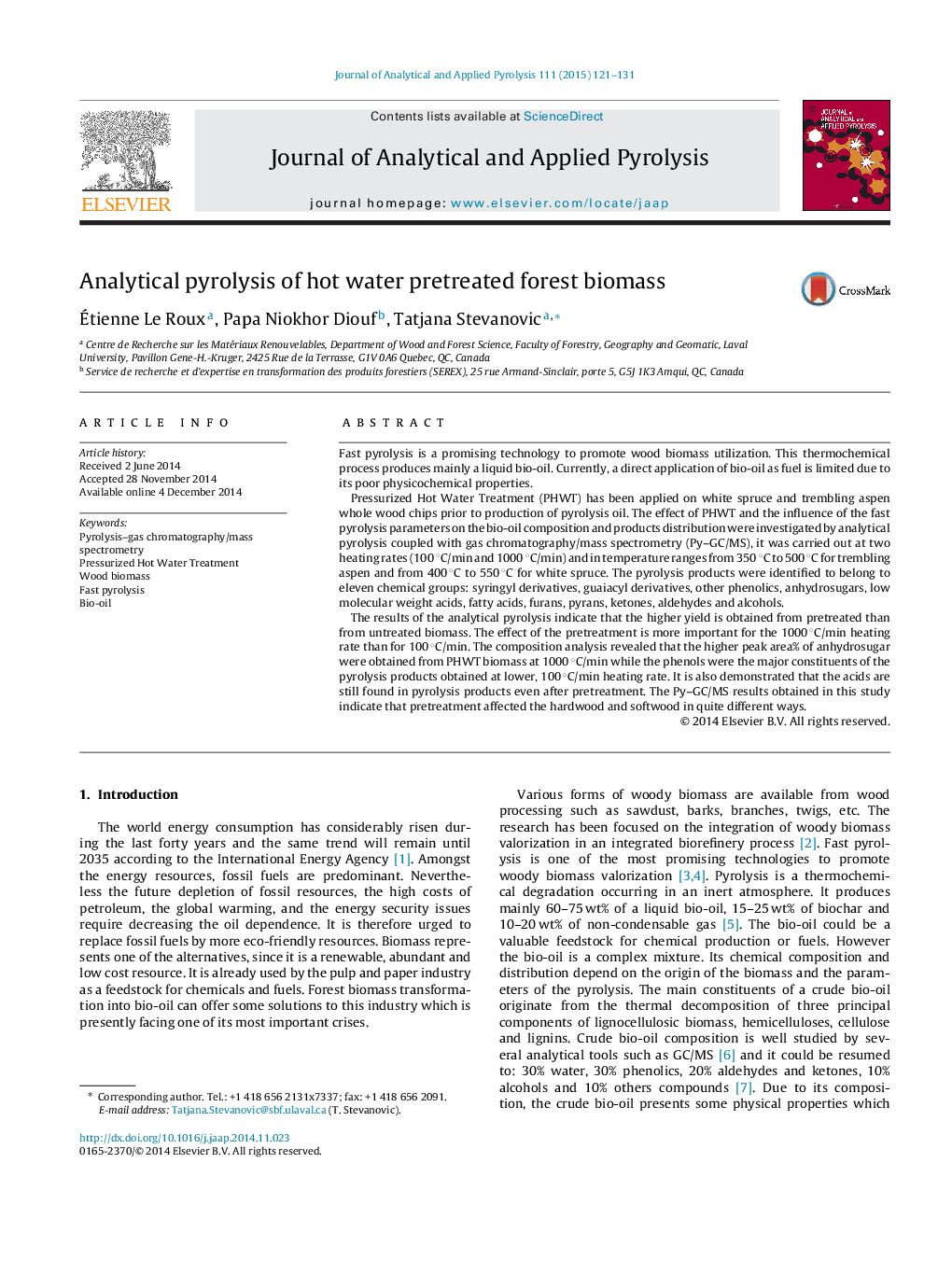| Article ID | Journal | Published Year | Pages | File Type |
|---|---|---|---|---|
| 1196710 | Journal of Analytical and Applied Pyrolysis | 2015 | 11 Pages |
•Wood biomass was pretreated by a Pressurized Hot Water Treatment before pyrolysis.•PHWT woods were analyzed by Py–GC/MS at heating rates: 100 °C/min and 1000 °C/min.•Phenolics are major constituents of pyrolysis products from pretreated spruce and aspen.•The high production of anhydrosugars is determined from pretreated spruce and aspen.•Low and medium severity pretreatments promote production of acetic acid.
Fast pyrolysis is a promising technology to promote wood biomass utilization. This thermochemical process produces mainly a liquid bio-oil. Currently, a direct application of bio-oil as fuel is limited due to its poor physicochemical properties.Pressurized Hot Water Treatment (PHWT) has been applied on white spruce and trembling aspen whole wood chips prior to production of pyrolysis oil. The effect of PHWT and the influence of the fast pyrolysis parameters on the bio-oil composition and products distribution were investigated by analytical pyrolysis coupled with gas chromatography/mass spectrometry (Py–GC/MS), it was carried out at two heating rates (100 °C/min and 1000 °C/min) and in temperature ranges from 350 °C to 500 °C for trembling aspen and from 400 °C to 550 °C for white spruce. The pyrolysis products were identified to belong to eleven chemical groups: syringyl derivatives, guaiacyl derivatives, other phenolics, anhydrosugars, low molecular weight acids, fatty acids, furans, pyrans, ketones, aldehydes and alcohols.The results of the analytical pyrolysis indicate that the higher yield is obtained from pretreated than from untreated biomass. The effect of the pretreatment is more important for the 1000 °C/min heating rate than for 100 °C/min. The composition analysis revealed that the higher peak area% of anhydrosugar were obtained from PHWT biomass at 1000 °C/min while the phenols were the major constituents of the pyrolysis products obtained at lower, 100 °C/min heating rate. It is also demonstrated that the acids are still found in pyrolysis products even after pretreatment. The Py–GC/MS results obtained in this study indicate that pretreatment affected the hardwood and softwood in quite different ways.
